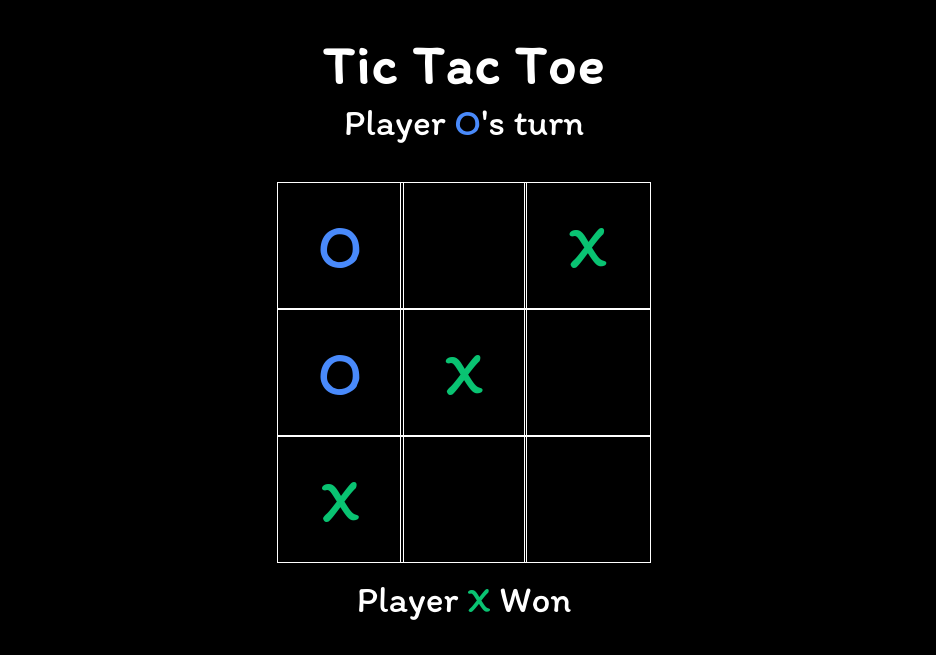Let’s break down the components and functionality of the code:
HTML Structure:
- The HTML structure includes a basic layout with a title, background styling, and a main section containing various elements for the game.
- It uses the “Itim” font from Google Fonts to style the text.
CSS Styling:
- The CSS section contains styles for the entire page, including the background color, font styling, and the appearance of the game grid and controls.
- It defines styles for the game grid, individual tiles, player indicators, and the reset button.
- The reset button has a unique hover effect with a skew transformation.
JavaScript Functionality:
- The JavaScript section starts with an event listener for the “DOMContentLoaded” event, indicating that the script should run after the HTML has loaded.
- The script initializes variables for tiles, player display, reset button, and an announcer to display game results.
- The game logic is implemented using an array representing the game board, player turns (X or O), and functions to handle user actions, update the board, change players, and announce game results.
- The game checks for winning conditions and a tie after each move.
- The reset button allows the players to start a new game, resetting the board and hiding the announcer.
Key Features:
- Responsive grid layout for the Tic Tac Toe board.
- Player turns are visually indicated with different colors for X and O.
- An announcer displays the game result (win or tie) when the game is over.
- The reset button allows players to start a new game.
Note:
- The code appears to be well-structured, with clear class and ID names for styling and JavaScript functionality.
- The JavaScript code uses modern ES6 features, such as arrow functions and template literals.
Overall, this code provides a functional and visually appealing implementation of the classic Tic Tac Toe game with a responsive design.


